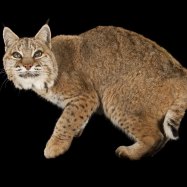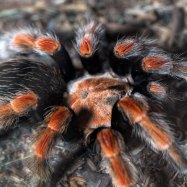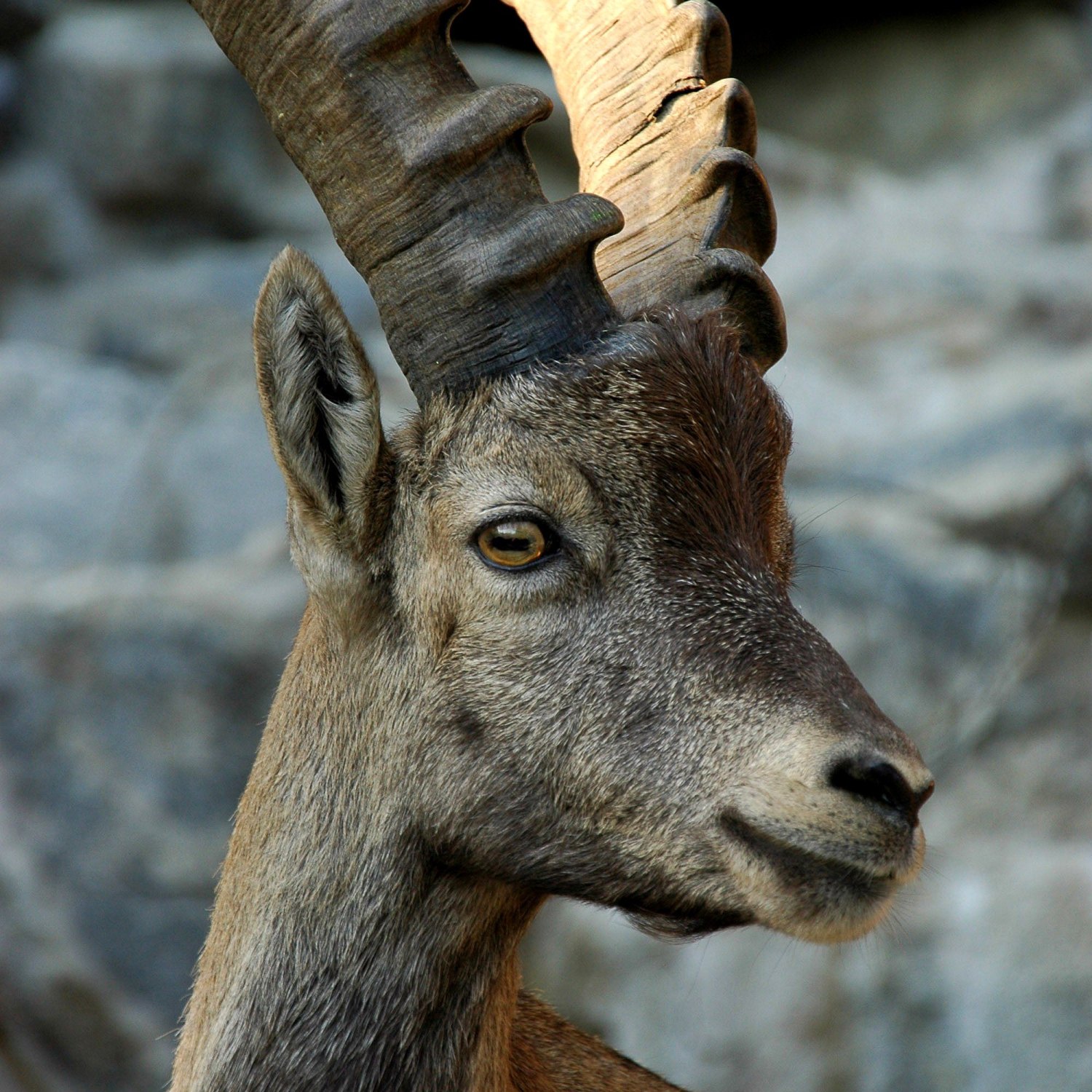
Ibex
115 to 150 cm (45 to 59 inches)
The ibex is a majestic creature that roams the mountainous regions of the Alps, Carpathians, Himalayas, Caucasus, and Atlas Mountains. With its stocky and strong body, this member of the Bovidae family is perfectly adapted for climbing steep slopes. They measure between 115 to 150 cm and are known for their impressive horns. Keep an eye out for these magnificent animals during your next alpine adventure. #Ibex #MountainLife #Wildlife
Animal Details Summary:
Common Name: Ibex
Kingdom: Animalia
Habitat: Mountainous regions
Ibex: The Majestic Mountain Climbers of the Animal Kingdom
High up in the mountainous regions of Europe, Asia, and Africa, lives a majestic creature that has captured the imagination of humans for centuries – the Ibex. With its strong, stocky body and impressive climbing abilities, the Ibex is truly a marvel of the animal kingdom. In this article, we will take a closer look at this fascinating species and explore what makes it stand out among its peers.The Basics of the Ibex
The Ibex, scientifically known as Capra ibex, belongs to the kingdom Animalia, phylum Chordata, and class Mammalia Ibex. They are a part of the order Artiodactyla, which includes other hoofed mammals such as deer, goats, and bovines. Ibexes, however, belong to the family Bovidae, which also includes sheep, gazelles, and antelopes.Appearance and Adaptations
One of the most distinctive features of the Ibex is its impressive set of horns. Both male and female Ibexes have horns, but the males have larger and more prominent ones. The horns are strong, curved, and ridged, and can reach up to 1 meter (3 feet) in length. They are used for defense, as well as for competing for mating rights with other males.Ibexes have a stocky and strong body, well adapted for living in mountainous regions. They have strong legs and wide hooves that provide them with stability and grip on steep slopes. They also have a thick coat that helps them withstand the cold temperatures of their habitat Ichthyosaurus. Another remarkable adaptation of the Ibex is its ability to lean against sheer rock walls at almost impossible angles, thanks to its flexible spine and specialized hooves.
Habitat and Distribution
As mentioned earlier, Ibexes are found in mountainous regions across Europe, Asia, and Africa. They have a wide geographical distribution, with various subspecies found in different countries. Some of the most well-known locations where Ibexes can be found include the Alps, the Carpathians, the Himalayas, the Caucasus, and the Atlas Mountains.Living in such harsh and rugged environments, Ibexes have developed incredible climbing abilities. They can easily navigate through rocky terrain and are able to reach altitudes of up to 4,600 meters (15,100 feet). This makes them one of the highest living land animals in the world.
Feeding and Diet
The Ibex is a herbivore, meaning it mainly feeds on plants. Their diet consists of a variety of grasses, herbs, leaves, and shrubs found in their mountainous habitat. In the summer, when vegetation is plentiful, Ibexes feed on fresh, green plants. In the winter, when food is scarce, they rely on stored fat and feed on twigs, bark, and lichens.Threats and Conservation
Unfortunately, like many other species in the animal kingdom, Ibexes face numerous threats to their survival. One of the biggest threats is habitat loss, as more and more mountainous areas are being developed for human use. Their impressive horns also make them a target for trophy hunters, and they are often poached for their meat and other body parts.To combat these threats, conservation efforts have been put in place to protect and preserve Ibex populations. These include setting up protected areas, implementing strict hunting regulations, and educating the public about the importance of these animals to their ecosystems. Despite these efforts, Ibexes are still listed as a species of conservation concern in many countries.
The Role of the Ibex in its Ecosystem
As with any other species, the Ibex plays a crucial role in its ecosystem. As herbivores, they help control the growth of vegetation in their habitat, preventing overgrazing and allowing other plant species to thrive. They also serve as prey for predators such as wolves and lynx, maintaining a balance in the food chain.Furthermore, Ibexes play an important role in seed dispersal. They consume a variety of plants, and their digestive system helps break down these seeds and distributes them across the mountains, creating new growth and promoting biodiversity.
Final Thoughts
In conclusion, the Ibex is a fascinating and impressive species that has adapted to thrive in some of the harshest environments on our planet. With its incredible climbing abilities, striking appearance, and essential roles in its ecosystem, it truly stands out among its peers in the animal kingdom. As we continue to learn more about this magnificent creature, it is our responsibility to ensure its survival and protect its natural habitat for generations to come.

Ibex
Animal Details Ibex - Scientific Name: Capra ibex
- Category: Animals I
- Scientific Name: Capra ibex
- Common Name: Ibex
- Kingdom: Animalia
- Phylum: Chordata
- Class: Mammalia
- Order: Artiodactyla
- Family: Bovidae
- Habitat: Mountainous regions
- Feeding Method: Herbivore
- Geographical Distribution: Europe, Asia and Africa
- Country of Origin: Various countries
- Location: Alps, Carpathians, Himalayas, Caucasus and Atlas Mountains
- Animal Coloration: Males are brown to gray with black markings, females have a lighter coloration
- Body Shape: Stocky and strong, adapted for climbing steep slopes
- Length: 115 to 150 cm (45 to 59 inches)
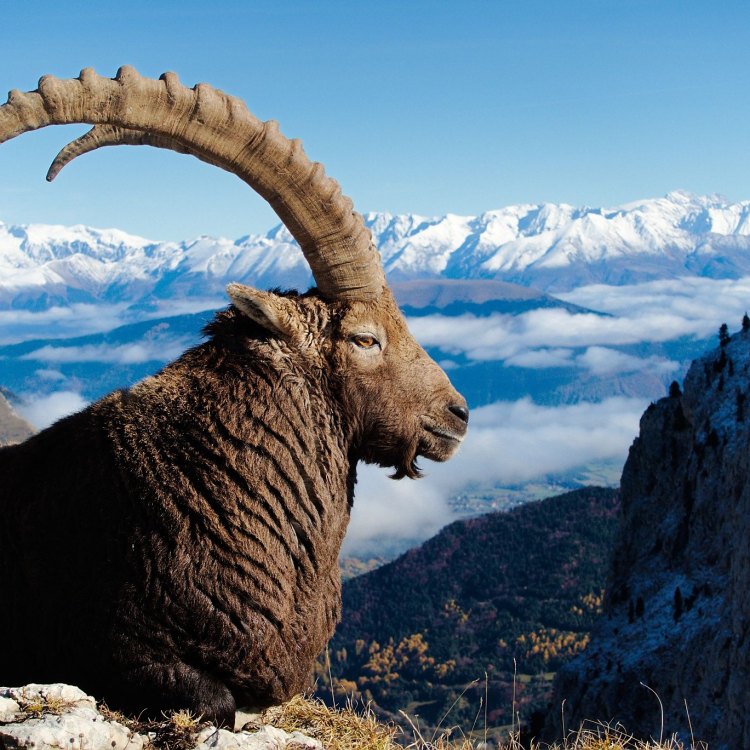
Ibex
- Adult Size: 60 to 90 kg (132 to 198 lb)
- Average Lifespan: 10 to 15 years
- Reproduction: Sexual
- Reproductive Behavior: Mating season occurs in late fall. Males compete for dominance and mate with multiple females.
- Sound or Call: Loud, high-pitched calls called "bells"
- Migration Pattern: Seasonal migration between high-altitude and low-altitude areas
- Social Groups: Mixed-sex herds or bachelor groups
- Behavior: Excellent climbers and agile on steep cliffs. They are active during the day and rest on rocky ledges.
- Threats: Hunting, habitat loss, competition with domestic livestock
- Conservation Status: Least Concern
- Impact on Ecosystem: Important for grazing and maintaining mountain ecosystems
- Human Use: Hunted for their meat, hides, and horns
- Distinctive Features: Long, curved horns, thick fur, and a beard on males
- Interesting Facts: Ibex can jump up to 6 feet high and 10 feet horizontally.
- Predator: Golden eagles, wolves, and lynxes
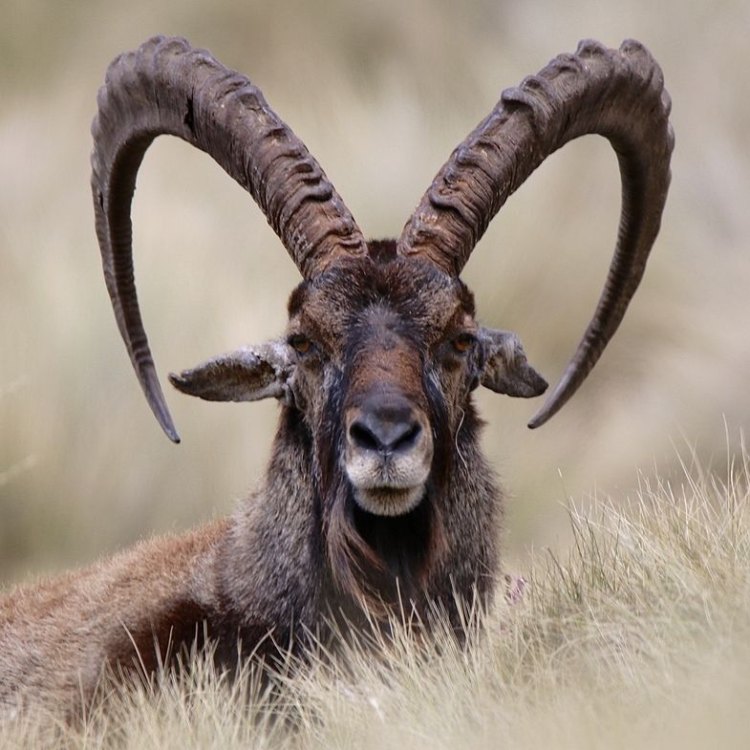
Capra ibex
Ibex - The Mighty Mountain Climbers of Europe
The majestic alpine landscapes of Europe are dotted with agile and surefooted creatures, scaling the steep cliffs and rocky ledges with ease. These creatures are none other than the Ibex, also known as the alpine ibex or steinbock. They are a species of wild goats found in the mountains and foothills of the European Alps and surrounding regions. The Ibex is an intriguing species with unique features and behaviors that have captivated humans for centuries PeaceOfAnimals.Com. So let's dive deep into the world of Ibex and discover what makes them such fascinating creatures.Physical Features and Habitat
The Ibex is a large mammal, with adult males weighing between 60 to 90 kg (132 to 198 lb) and standing up to 1.2 meters (4 feet) tall at the shoulder. Females are smaller, with a weight range of 35 to 65 kg (77 to 143 lb). They are well adapted to their mountainous environment with long, curved horns that can grow up to 1 meter (3.3 feet) in length. These horns are thicker and more massive in males than in females, and they are used for fighting and defense against predators.
Their thick, coarse fur is usually a brownish-grey color, which provides insulation against the cold high-altitude climate. Males also have a distinctive beard, which gives them a rugged and mature appearance Impala. These physical features are what make the Ibex stand out and instantly recognizable in their habitat.
Speaking of their habitat, Ibex can be found in the Alps, Carpathian Mountains, Pyrenees, and Caucasus Mountains. They prefer steep and rocky terrain at high altitudes, ranging from 1,800 to 4,600 meters (5,900 to 15,100 feet) above sea level. During the warmer months, they migrate to lower altitudes, where they can graze on grasses, herbs, and shrubs.
Reproduction and Social Behavior
Ibex are seasonal breeders, with the mating season occurring in late fall. During this time, male Ibex compete for dominance and the right to mate with multiple females. They perform aggressive displays, such as walking on their hind legs, headbutting, and locking horns. The strongest and most dominant male is usually the one to mate with the females in the herd.
Once the females give birth after a gestation period of around 5 months, they form small mixed-sex herds or bachelor groups with younger males. The young kids stay with their mothers for about a year before venturing off on their own. The social structure and behavior of Ibex are fascinating, and it further highlights their adaptability to their environment.
Hunting and Conservation
One of the most significant threats to the Ibex population is hunting. In the past, they were hunted for their meat, hides, and horns, which were used as trophies and for making traditional medicines. This led to a sharp decline in their numbers, and they were almost extinct in some parts of their range.
Fortunately, the Ibex has made a remarkable comeback due to conservation efforts. They are listed as "Least Concern" on the IUCN Red List, which means they are not in danger of extinction. This is a tribute to the efforts put in by conservationists, governments, and local communities in protecting this magnificent species.
The Ibex's role in maintaining the mountain ecosystems cannot be overlooked. They are important grazers, consuming a variety of vegetation and keeping it in check. This helps in preventing overgrowth of plant species, which can disrupt the balance of the ecosystem. They also serve as prey for other predators, such as golden eagles, wolves, and lynxes, making them an essential link in the food chain.
Human Use and Interesting Facts
Apart from hunting, humans have also found other uses for Ibex. The meat is considered a delicacy in some regions, and the hide is used for making traditional clothing and bags. Ibex horns are also popular among tourists, who are often captivated by their unique shape and size.
But perhaps the most intriguing fact about Ibex is their incredible jumping abilities. They can jump up to 6 feet high and 10 feet horizontally, which allows them to easily navigate the cliffs and rocky terrain of their habitat. This is a testament to their physical strength and agility, which makes them excellent climbers.
The Ibex and NLP
The Ibex's features and behaviors make it a fascinating subject for NLP (Natural Language Processing). For instance, their migration pattern can be seen as a seasonal topic model, where they move between high-altitude and low-altitude areas depending on the time of the year. The mating season and social groups can also be viewed as topics related to reproduction and behavior, respectively. This shows the wide scope of NLP and how it can be applied to diverse subjects such as wildlife.
Conclusion
The Ibex is a magnificent creature, perfectly adapted to its mountainous environment. Their unique physical features, social behaviors, and role in maintaining ecosystem balance make them a vital species in the European Alps and surrounding regions. Despite facing threats in the past, they have made a remarkable comeback and are now protected and valued for their contribution to the natural world.
So, the next time you visit the alpine regions of Europe, keep an eye out for these mighty mountain climbers. And remember, every time you see an Ibex in its natural habitat, you are witnessing a species that has stood the test of time and continues to thrive against all odds.
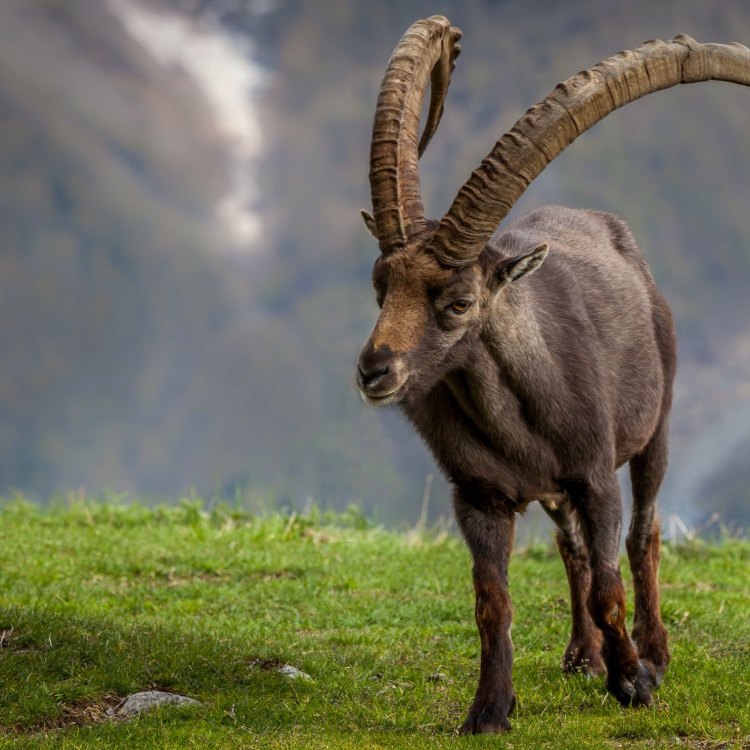
Ibex: The Majestic Mountain Climbers of the Animal Kingdom
Disclaimer: The content provided is for informational purposes only. We cannot guarantee the accuracy of the information on this page 100%. All information provided here may change without prior notice.







